
Euphorbia Cactus
- Light: Plenty of sun
- Water: Euphorbias like to dry out in between waterings. Do not overwater.
- When grown indoors, the Euphorbia trigona can grow to 3 to 7 feet tall (1-2 meters). But it is a slow-growing plant, so you won't have to repot it too often.
- Temperatures: Euphorbias can withstand high summer temperatures, but minimum winter temperatures vary
- Fertilizer: Apply a balanced, water-soluble fertilizer in the spring and summer
Euphorbias are generally simple to care for. And it is easy to make them happy.
You plant them in well-draining soil, give them light and a bit of moisture, and protect them from pests, and you are good to go.
It also goes without saying that these plants are great for beginners because they do not die easily.
Succulent euphorbias are native to the desert, so they also need growing conditions similar to those of cacti.
These plants are adopted for cultivation outdoors but they also grow well in pots or containers that can be placed inside or outside the house.
Most succulent euphorbias start blooming in the spring, lasting throughout the summer.
Then they go on a dormant period in the winter.
Soil and Pot Requirements
Succulent euphorbias are not very picky and can even thrive in dry, poor soil.
But they do need the soil to be well-draining, especially if you are keeping them in pots. You can use a commercial cactus and succulents potting mixture.
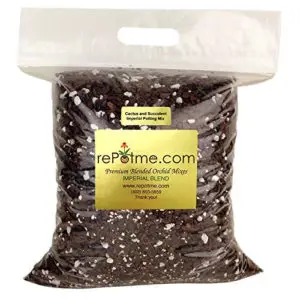
I recommend this wonderful cacti soil mix by repotme. It is easy to use and very well draining.
- High Quality Mix, Handcrafted in small batches
- Blended With Monterey Pine Bark from New Zealand, Red Volcanic Rock, Diatomite, and Premium Grade Pumice.
You can also make your own by adding gritty pebbles and sand to any regular plant formula.
We recommend using soil with a pH ranging from 6.1, which is mildly acidic, to 7.8, which is mildly alkaline.
When it comes to the ideal container, you should use a container that allows excess moisture to evaporate, such as a clay pot.
This particular Euphorbia also does not mind being crowded in one container.
Meanwhile, in-ground euphorbias like added grit.
You can also plant them in a rocky area with mixed loam.
Your succulent Euphorbia would also prefer a pot that is two to three inches (5 to 7.5 cm) wider in diameter than the size of its base.
This pot should also have a drainage hole in the bottom. When grown in a pot, the plant will need more frequent watering.
In mild climates, succulent euphorbias can be grown outdoors and require very little maintenance.
Watering Requirements
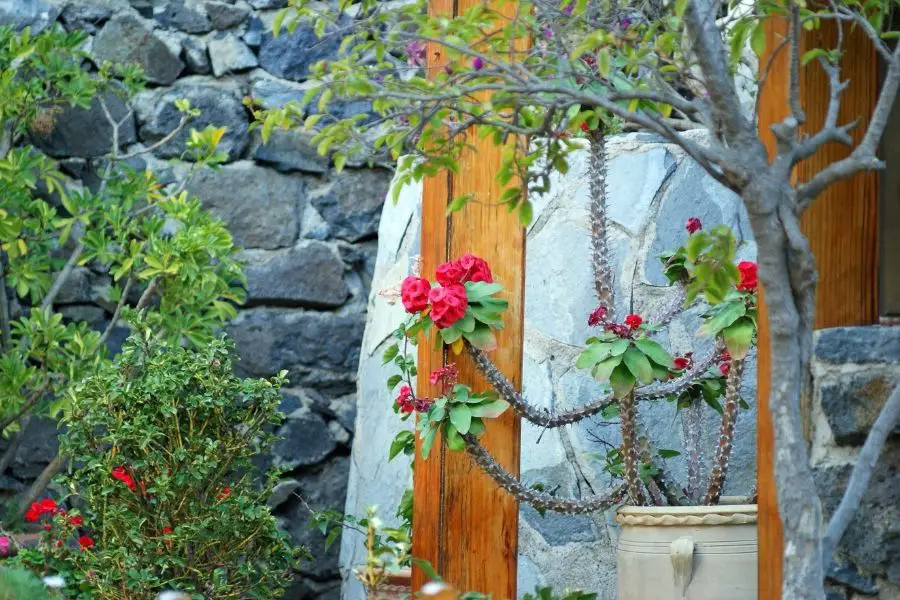
The only strict rule when it comes to watering succulents is not to overwater them.
Succulent euphorbias like it when they are dried out before you water them again.
These succulents can even survive drought, but not for a long period.
However, this does not mean that they need it. To make sure that the soil has dried out, stick your finger an inch or so into the potting mixture and check if it is damp.
If it is dry to the touch, you can water the plant again and if not, you can wait until there is no more moisture.
In the winter, you need to water your euphorbias less frequently. Instead, give them enough water to provide the bare minimum moisture and to keep them from wilting.
During the warmer seasons, the best time to water your euphorbias is in the evening.
But you can also do this in the morning before the sun goes up and the temperatures rise, and may even be a better idea during the winter months.
Euphorbias that are grown in containers or pots will need more frequent watering in hot weather.
Sometimes, you will need to water two or three times a week.
Fertilizer
Every euphorbia species has its own nutritional needs. But they will benefit from a well-balanced fertilizer.

We recommend this fertilizer, designed specifically for cacti. Make sure to follow the instructions and not use too much fertilizer.
- Provides calcium and other nutrients to your cactus
- Mix 1 teaspoon per gallon of water and apply as a soil drench to the base of a plant
- Feed plants and flowers every 2 weeks during the growing season
- NPK 1-7-6 fertilizer Analysis
Potted plants will need regular feeding during the growing season, which is during spring and summer. Just apply a water-soluble fertilizer with a 1-7-6 NPK percentage and diluted to a quarter strength once a week until the plant enters its dormant period.
NPK stands for nitrogen, phosphorus, and potassium, and then the series of three numbers indicate the percentage of these nutrients contained in the formula.
Temperature Requirements
When it comes to temperature, tolerance may vary from one species to another.
While succulent euphorbias generally enjoy high summer temperatures, the minimum winter temperatures they can tolerate vary.
For example, species from West and Central Africa, as well as from the tropical and subtropical regions of America, require temperatures between 13°C to 15°C (55°F to 60°F) in the winter.
Meanwhile, species from East Africa and Madagascar need temperatures between 10°C to 13°C (50°F to 55°F).
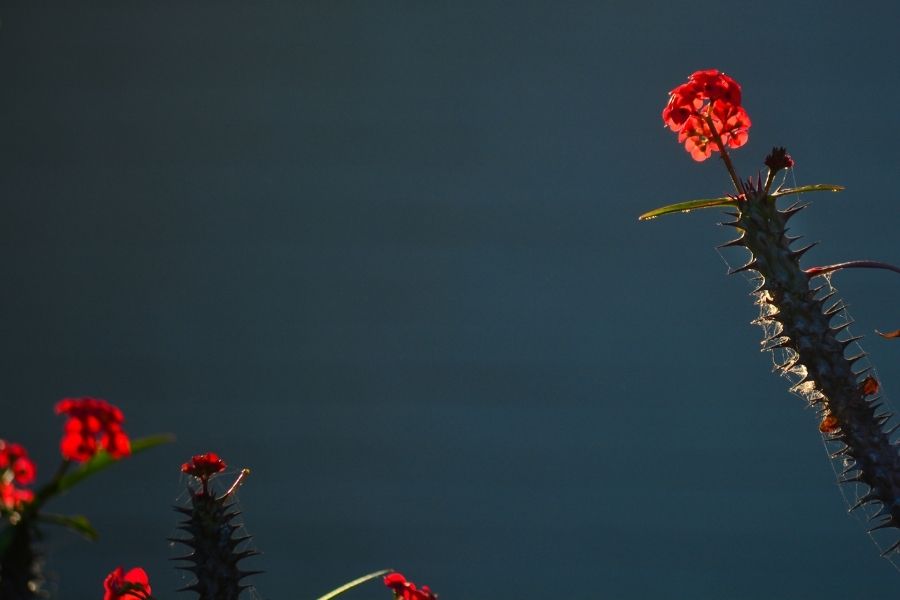
There are also species from North and South Africa, and these require temperatures below 10°C (50°F).
Species from South Africa will also make it through a short period under a few degrees of light frost if they are just kept dry.
So, it is safe to say that, generally, succulent euphorbias will suffer if placed in temperatures below 10°C (50°F.)
If you are keeping your plant indoors, it is recommended that you take it outdoors, like in the garden or on the balcony, from spring to late autumn.
Sun and Light Requirements
Succulent euphorbias like the African milk cactus need to be under bright yet indirect sunlight for at least four hours each day. They will also do well in partial shade.
If you are keeping the plant indoors, it is best to place it by a south- or southeast-facing window.
These euphorbias may be sun-loving plants, but you need to protect them from direct sunlight, especially during the midday.
They can still be prone to get burnt.
Maintenance: Pruning and Repotting
Succulent euphorbias can get too thick and heavy once they have continuously branched out.
These plants tend to grow really tall, too.
So you may want to consider pruning off their arms to control and manage their size.
You can use the cut stems to propagate new plants.
Do not forget to always wear gloves, eye protection, and protective clothing when pruning or clipping your euphorbias.
Their caustic milky white sap could irritate your skin, and if it gets into your eyes, it may cause problems with your eyesight.
In the event you come into contact with the sap, immediately wash it off with water.
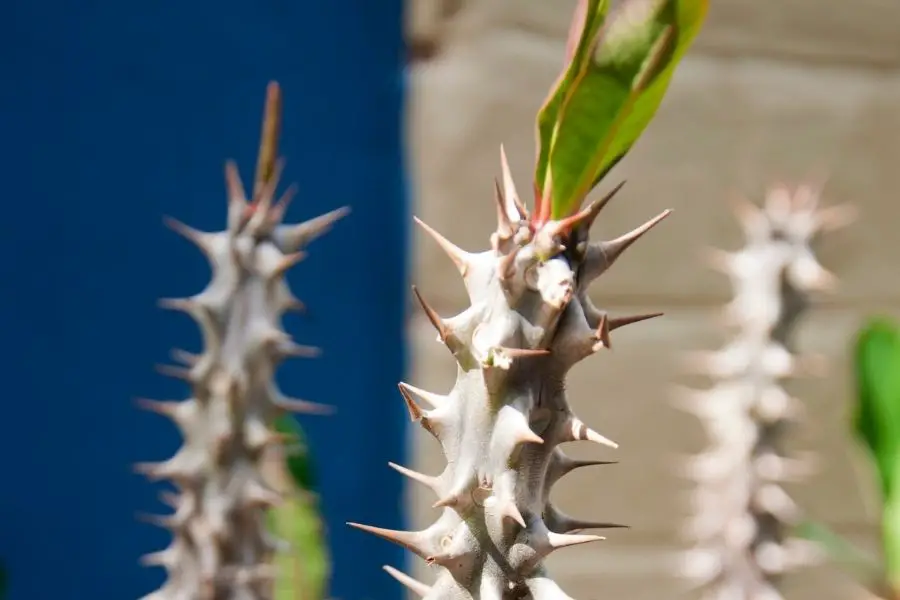
And because these succulents can get thick, they will eventually outgrow their pots.
As such, repotting them into larger pots will benefit them.
But you do not need to do it every year.
Once every two or three years would be enough. Repotting is also a good way for your Euphorbia to get a fresh batch of potting mix.
The ideal time to repot your succulents is early spring when the growing season has started.
Once you have transferred your plants into larger containers with new soil, wait for one to two weeks before watering them.
Propagating Euphorbias
The quickest and easiest way of propagating succulent euphorbias is through stem cuttings.
Some of the species that originated from Madagascar can be propagated successfully using leaf cuttings.
You can also grow euphorbias from seeds, but they can be hard to come by and are difficult to germinate.
However, euphorbias grow rather well from seeds when they are sown in pots indoors.
Another propagation method you can do is grafting.
Through Cuttings
To propagate a succulent euphorbia through cuttings, you need to cut an arm off the Euphorbia’s stalk using a pair of garden pruners or a knife.
Be sure to wear a pair of gloves when handling the stems to protect you from the plant’s prickly spines and from the milky sap, which can irritate your skin.
You also need to be careful not to allow the sap to come in contact with your mucous membranes, like your eyes.
As much as possible, cut off at the base or branching point.
But if yours is a solitary plant, you can cut it off at the top; this will encourage it to produce offsets that you can remove later.
The best time to take a cutting is in the summer or spring.
Wash and clean the sap off the cutting by dipping it in a glass of water or spraying it away.
Then leave it for several days to callus. When the open cut has callused, plant it in a pot with a well-draining soil mix. You can also dip the cut surface in a rooting hormone before planting.
For stem cuttings, rooting may take one or two weeks, sometimes a bit longer. But raising the temperature of the soil to 25˚C (77˚F) can speed it up.
Through Seeds
You can also propagate succulent euphorbias from seeds. Euphorbia fruits are three-compartment capsules, sometimes (but rarely) two-compartment ones, that are also occasionally fleshy.
These fruits ripen to a woody shell that splits open to release seeds.
Sow the seeds in well-draining soil or a seed growing mix. The best time to do this is during the spring.
Make sure to keep the soil moist as you wait for the seeds to germinate, usually taking one or two weeks.
Maintain a soil temperature of 21˚C to 27˚C (70˚F to 80˚F).
Via Grafting Method
Grafting involves joining two plants together, where you cut and create a wound on one plant and insert a stem of another plant into that wound.
Each of their tissues will eventually merge and grow together.
Some rare and delicate Euphorbia species are propagated through the grafting technique because it is faster and easier.
This method also encourages more flowers, especially when done on more vigorous rootstocks.
Common Problems Related to Succulent Euphorbias
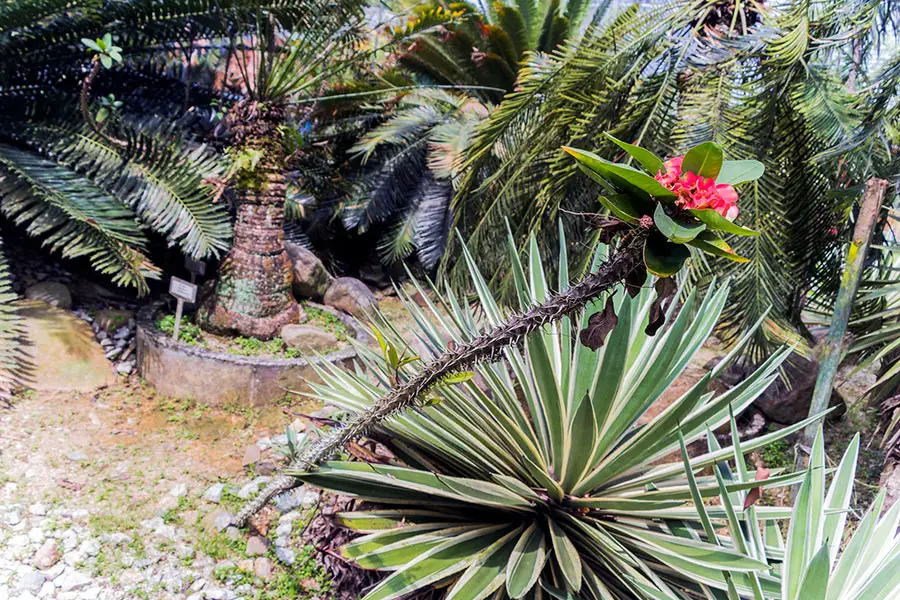
Some of the most common problems you will experience with your succulent euphorbias include pests, yellowing leaves, and mildew.
- The most common pests you would have to deal with when growing euphorbias are mealybugs, scales, spider mites, and whiteflies. These insects and pests can be very hard to get rid of and control because they are tiny and can hide easily. So by the time you discover a group of them, you would be presented with a full-blown infestation. To get rid of pests, you can apply an organic pesticide.
- Fungal or mildew infection can also be a problem. This usually appears as a gray or white powdery film on certain portions of your Euphorbia. It can be caused by poor ventilation, high humidity, lack of nutrients, and insufficient sunlight. When this happens, isolate your Euphorbia and keep it away from your other plants. Then apply neem oil to get rid of the mildew infection.
- Another common complaint among euphorbia owners is that their plant falls over or leans. This is due to overwatering. When this happens, prop your plant up with a stick to gain stability as you allow the soil to dry out.
- Yellow leaves are a concern, too. This is also another sign of overwatering. So you will have to adjust your watering frequency to allow the soil to dry. Keep in mind that when it comes to succulents, too dry is better than too wet.
What Is an Euphorbia Cactus?
Euphorbia is a large genus of flowering species of plants known for their poisonous milky sap called latex.
But if you talk about the euphorbia cactus, you are most likely referring to three of the most popular ones: Euphorbia trigona, commonly known as the African milk tree; Euphorbia lactea, also called the dragon bone cactus, and Euphorbia antiquorum, or the” Euphorbia of the Ancients.”
These euphorbias are not exactly cacti, though, but are thorny exotic succulents.
Technically speaking, there is no such thing as a euphorbia cactus.
Euphorbia collectively refers to flowering plants in the spurge family.
This genus has more than 2,000 members, ranging from tiny annuals to large trees.
Some of these plants are cultivated as ornamentals, like poinsettias and the Euphorbia milii or crown of thorns.
Some euphorbias have evolved in terms of their physical form and characteristics to resemble cacti, like those found in North and South America.
The cacti-like euphorbias, which originated from the deserts of Madagascar and Southern Africa, are also tolerant of drought and heat.
But they are classified as succulents instead of cacti. In fact, about 850 Euphorbia species are strictly classified as succulents.
Common Characteristics of Euphorbias

If euphorbias encompass a wide variety of plants, including large trees, woody shrubs, and herbs, what do these species have in common?
Here are the common characteristics of euphorbias.
Milky-White Sap
One common characteristic among euphorbia plants is that they have a milky-white and latex-like sap that is poisonous or irritating to humans.
Because of this sap, the term “spurge” to refer to this family of plants was born.
The word was coined from the Old French or Middle English “espurge,” which meant the use of this sap as a purgative. There are also accounts that one of the cactus-like euphorbias had been used as an effective laxative.
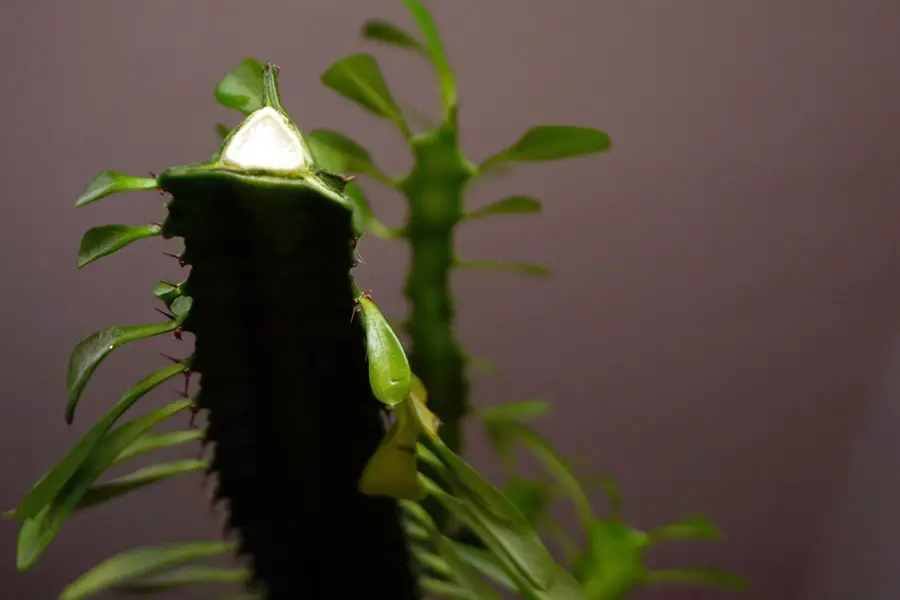
This milky sap, which is called latex, evolved to deter herbivores from looking for their next plant-based meal.
The slightest cut or wound on the stem of the plant would cause this sap to seep out. The latex has caustic and irritating effects on the skin when touched, and when it comes in contact with certain mucous membranes in the nose, mouth, and eyes, it can lead to extremely painful inflammation. It can also cause mild to severe vision problems.
This latex also benefits the plants as it has certain antibacterial and antifungal properties.
Additionally, it acts as an excellent wound sealant as it often congeals after a few minutes of exposure to air.
And because a cut or wound on a plant’s stem self-seals, you would not have to apply antifungal powder on it to prevent infection.
Unique Floral Structure
Euphorbias also have unique and unusual floral structures. A head of flowers looks like a single bloom, with each flower in the head reduced to its barest essential part necessary for sexual reproduction.
Each flower is either male or female, with the female reduced to only the pistil, while the male being only the stamen.
That means that these flowers do not have petals, sepals, or other typical parts.
Confusing Euphorbias with Cacti
Euphorbia succulents are most commonly misidentified as and confused with cacti by non-experts, especially the stem or columnar-shaped ones.
Certain euphorbia species were classified as succulents and not cacti because they secrete latex. Cacti do not do this.
Unlike cacti, which usually have beautiful and showy flowers, euphorbia succulents have individual flowers that are usually very small and nondescript, without sepals and petals.
And while euphorbia succulents that are natives of the desert have thorns, these are still different from cacti spines.
Type Species: Euphorbia Antiquorum
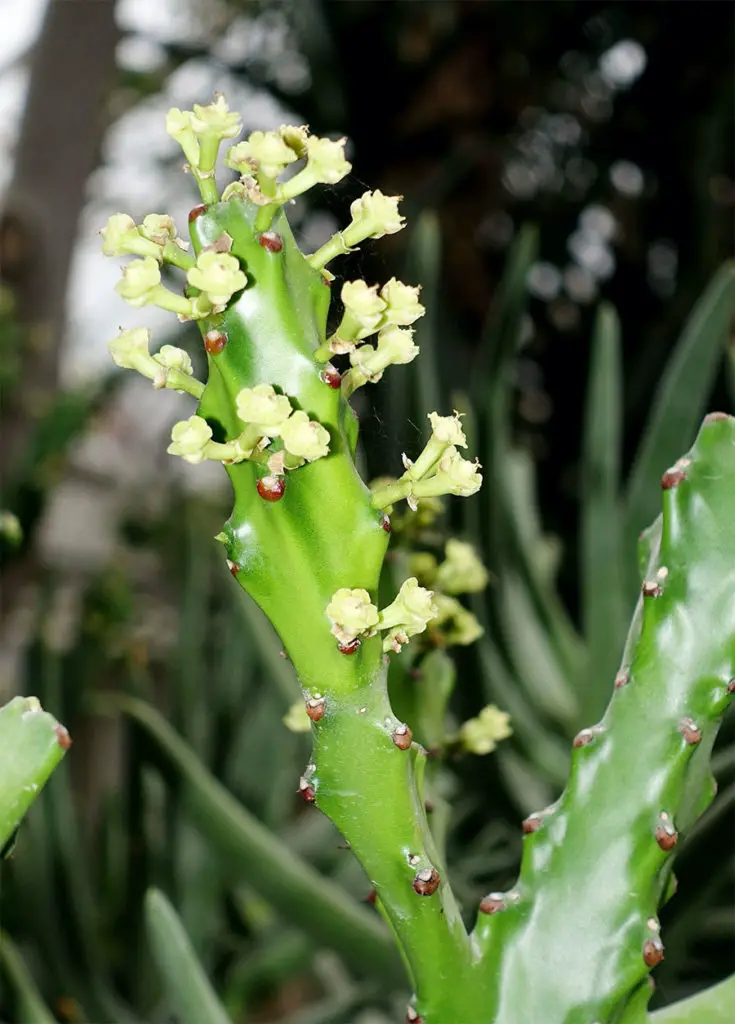
Euphorbia antiquorum, which is more commonly known as the Indian spurge tree, “Euphorbia of the Ancients,” or antique spurge, is the type species of Euphorbia.
The type species is what is considered the best example of the generic characteristics of a certain genus.
This Euphorbia is a small succulent tree or succulent shrub that can grow up to 23 feet (7 meters) tall, branching out in ascending style.
The older stems are cylindrical and tend to become brownish-green in color.
The branches are green, with a smooth texture, and they can grow as thick as 2.8 inches (7 cm) with three or four ribbed sections.
It also has green leaves clustered at the apex and can get up to 4 inches (10 cm) in length and 0.8 inches (2 cm) in width.
The spines of the Euphorbia antiquorum are paired and dark, and they can grow up to 0.2 inches (0.5 cm) long.
Meanwhile, its flowers can vary in color from yellow-green to pinkish, and they appear all year.
This plant also bears tiny fruits that look like three-lobed capsules, which start off as green and ripen to become red.
Frequently Asked Questions
Let us try to answer some of the most frequently asked questions related to succulent euphorbias.
What are the most common types of succulent euphorbias?
Aside from the African milk tree (Euphorbia trigona), candelabra or dragon bone cactus (Euphorbia lactea), and Euphorbia of the Ancients (Euphorbia antiquorum), other common types of succulent euphorbias include the crown of thorns (Euphorbia milii), Basketball euphorbia (Euphorbia obesa), pencil tree (Euphorbia tirucalli), Indian Spurge tree (Euphorbia neriifolia), and candelilla euphorbia (Euphorbia antisyphilitica).
What is a dormancy period and a growing period?
The dormancy period of a plant refers to that period of the year when a plant shows little to absolutely no growth at all. Any metabolic activity is reduced for a particular amount of time. As such, during the dormancy period, you do not have to water or feed your plant as frequently as any other period. The dormant period for euphorbias is in December.
Meanwhile, the growing period of a plant is that period of the year when it grows successfully. The growing period for euphorbias is in the spring and summer.
What happens when the latex or milky sap accidentally gets into your eyes, and what do you need to do?
The latex or milky sap of the euphorbia plant is highly toxic and is an irritant to the skin and eyes. Accidental contact of the sap to the eye can cause pain and inflammation.
Initially, you will experience severe burning sensation with blurring vision and mild conjunctivitis. In some cases, the symptoms can worsen and lead to severe corneal edema, epithelial sloughing, and sight defect.
When this happens, you need to irrigate the affected eye with running water immediately, and head to the emergency room so proper medical treatment can be given to you. Make sure to bring a sample of the plant so doctors and experts can investigate the species. Saps from different species of euphorbias have different toxicity levels.
What exactly happens when the latex or milky sap of a euphorbia plant gets on your skin?
When the latex touches your skin, you may get contact dermatitis. The sap is also reportedly photosensitive, so if it comes into contact with your bare skin in the sun, this may result in blisters and skin ulceration. As soon as you get sap on your skin, thoroughly wash the area with soap and water.
What happens when the sap is accidentally ingested?
You may have read in many gardening sources that the latex or sap of a euphorbia is a skin and eye irritant and highly toxic. But nothing much is mentioned about what happens when it is ingested accidentally, especially by little children or by dogs.
The simple answer is that it can kill people. Latex contains a poison called euphorbon. Post-mortem exam of people who died due to euphorbon has revealed severe inflammation of the stomach walls and the intestine. In some cases, the stomach wall has been perforated.
Some euphorbia species’ sap has very high toxicity levels that even standing close to a bleeding euphorbia plant, and inhaling its vapors can cause a burning sensation in your throat.
There have also been reports of animals being harmed by latex, including milking cows fed on a certain species of Euphorbia during drought and giving birth to calves with deformities.
Are the saps of all euphorbia species harmful?
It is best to be on the safe side of things if you think of latex as toxic, regardless of what species of Euphorbia it is. This way, you never second-guess yourself, and you would be compelled to always be cautious.
However, it is also worth noting that people use the sap of some species for certain purposes. Some are used to remove warts, as adhesives, as purgative, as an insecticide and as an earache and asthma remedy. There are also species whose latex is used for caulking boats, relieving toothache, treating snake bites, and poisoning arrows. Most of these medicinal uses have no scientific basis.
Final Thoughts
Succulent euphorbias are perfect for novice gardeners because they do not require too much care and attention.
Just plant them in well-draining soil, make sure the soil has dried out in between waterings, and give them plenty of indirect sunlight and you can be sure they would thrive.
However, you also need to be armed with a lot of information about euphorbias because these plants can be confusing.
The euphorbia genus encompasses a wide variety of plants, from annuals to perennials, to succulents that look like cacti and these plants are harmful.
They have a milky sap that is toxic and can cause skin and eye irritation. Ingestion of this sap can even be fatal to people and pets.
Sources
- Wikipedia: Euphorbia
- Gardening Know-How: Growing Euphorbias: How To Cultivate A Euphorbia Plant
- Gardening Know-How: Caring For Dragon Bone Plants – Learn How To Grow Dragon Bones
- The Spruce: Euphorbia (Spurge) Plant Profile
- NCBI: Keratouveitis caused by Euphorbia plant sap
- Nursing 2020: How do euphorbia plants cause contact dermatitis?
- Yorkshire Evening Post: Common euphorbia plant is “toxic” and can cause “blistering” if touched
- The Amateurs Digest Archive: How Dangerous are Euphorbias?
Hi,
I have a question. Every time I prune euphorbia, properly protected with cloths, eye glasses and gloves, afterwards my lips start to burn. I am positive that I did not touch them. The sensation goes away after several hours. Does the sap emanate something to the air that is picked up by the lips soft tissue?
Please advise,
Thank you,
Gino